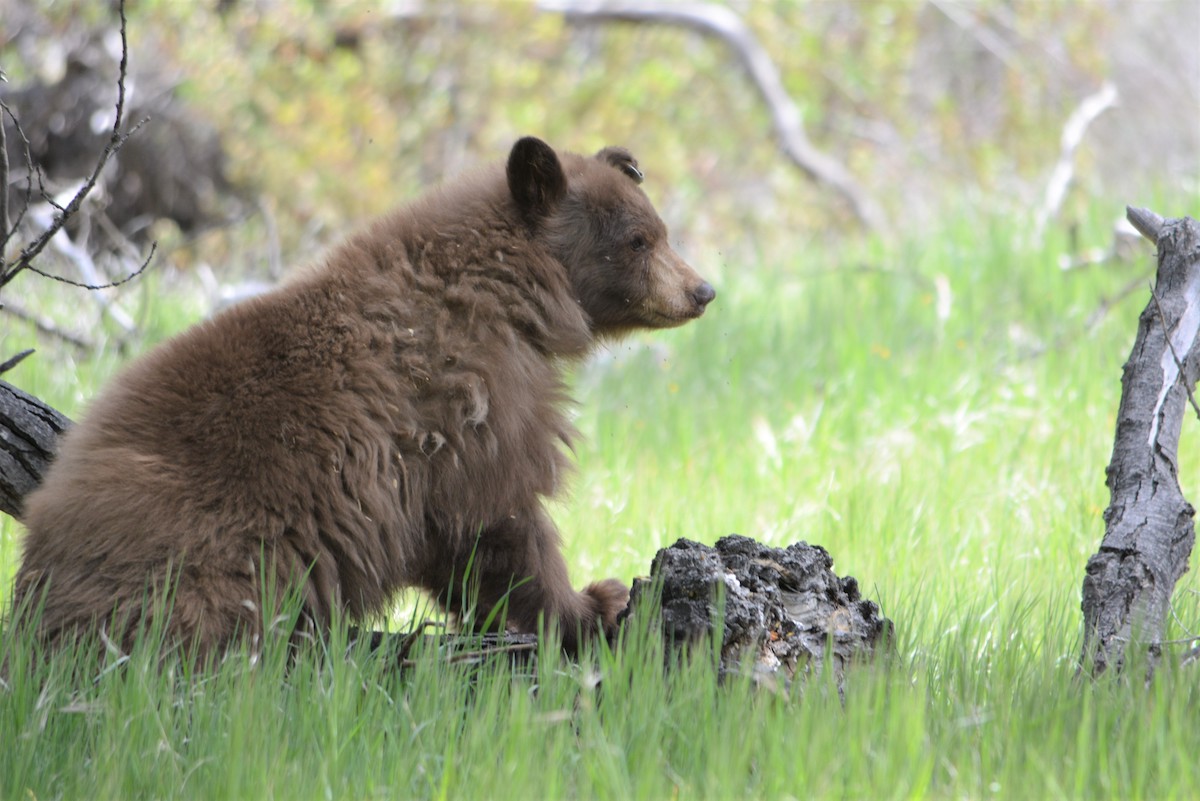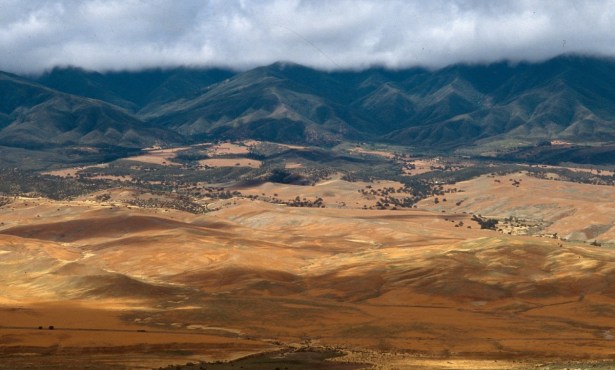Bear Struck and Killed by Vehicle in Montecito
Sightings in Santa Barbara of Black Bears and What to Do If You See One

Bear sightings in Santa Barbara, while uncommon, are not unheard of. In fact, on the night of Friday, May 13, a female black bear was killed in an apparent vehicular hit-and-run near Ladera Lane in Montecito.
Neighbors at East Valley Road and Ladera Lane heard screeching tires, a thump, and the squeal of an animal around 8:30 p.m. One said he called 9-1-1 and saw two animals move off the road. On Monday, a dead bear was lying at the empty lot on the corner, Santa Barbara resident Jeff Miller told the Independent. He said paw prints nearby indicated an orphaned cub was roaming the area, according to wildlife biologist Dustin Pearce of the California Department of Fish and Wildlife.
As the human-wildlife conflict specialist for the department, Jessica West occasionally receives calls about human-bear conflict in the foothill communities of Los Padres National Forest. “In Santa Barbara, most human-bear conflict has to do with chickens, bees, and trash,” West said. Especially in Montecito, bears get into easily accessible chicken coops, go after the larvae in bee boxes, and like to explore residents’ trash.
Bears are on the hunt for things to eat. “Bears are just so food-driven,” West said. They have a lot of variety in their diet but mostly consume plant material, insects, and occasionally smaller animals. If people leave a door or window open, West added, bears have been known to enter homes when they smell food cooking, using a sense of smell that is 100 times better than ours.
According to West, bears in the wild are often afraid of people. Their objective is securing food, and humans can get in the way of that. Her advice upon an encounter is not to approach the bear, to speak in a low and firm voice, and to slowly back away from it without turning around.
“Bears can feel trapped if you don’t give them space,” West said. In the case that a bear does feel trapped and approaches, she advises you to make yourself look as big and sound as loud as possible, waving your arms and yelling at them firmly.
Similar advice is applicable if a bear is in your home. “The key thing to remember is to make sure you leave an escape route for the bear,” West said.
In terms of how to prevent human-bear conflict in the first place, West recommended removing attractants like food and trash completely, and preventing bears access to chicken and bee enclosures with electric fences.
Sign up for Indy Today to receive fresh news from Independent.com, in your inbox, every morning.
“It also really comes down to a community effort,” West said. “You might be doing everything right, but if your neighbors aren’t, you’re still gonna have bear issues.”
California is home to an estimated 30,000-40,000 bears, all of which are black bears, according to West. The Department of Fish and Wildlife is currently trying to determine how many are in Southern California. Corral traps are being placed around trees with a scented item in the middle to lure bears in, and their DNA is collected and analyzed from the fur they leave on the barbed wires.
While there have not been more than a handful of bear conflicts in Los Padres National Forest and Santa Barbara overall, West says that there could very well be more in the near future. Due to climate change, drought conditions, and fires, bears may begin to venture more into Santa Barbara communities, according to West. “It’d be good to get ahead of it, before these conflicts really start to pick up,” she said.
Connie Gillies, a nature photographer who is married to Miller, knows the empty lot at Ladera and East Valley as the “deer nursery.” She said she often stops by to document bobcats, deer, falcons, and red-tailed hawks. “Every time I’ve photographed animals here, it’s shocked me how fast people drive on Ladera,” she said. “It was just a matter of time before a tragedy like this happened. Something needs to be done to protect our wildlife.”
So far, the orphaned cub hasn’t been seen in Montecito. But if you do see it, West said to contact Fish & Wildlife’s Wildlife Incident Reporting system, or call the Natural Resource Volunteers at (562) 596-3885. For all other cubs, treat them the same as an adult bear and back away slowly and watchfully — it’s likely a very protective mother is nearby.
Support the Santa Barbara Independent through a long-term or a single contribution.



